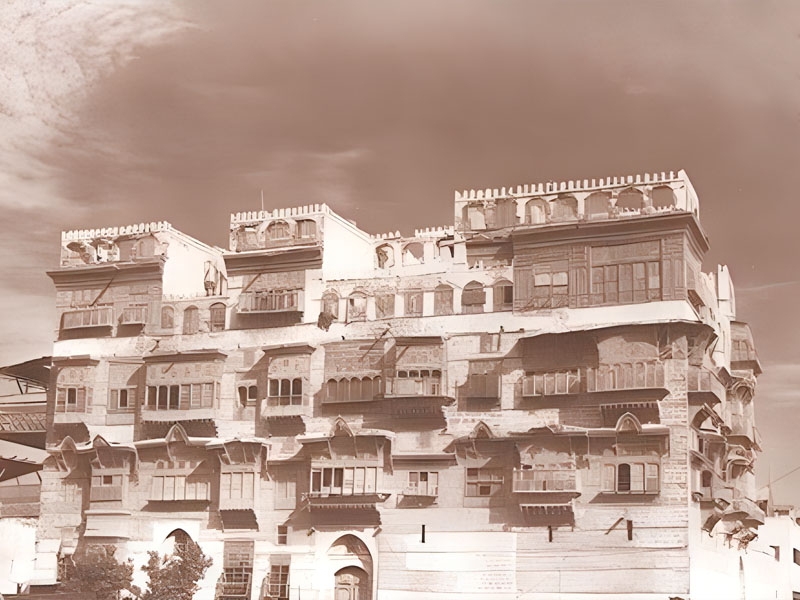Traditional Iraqi architecture: Baghdad and Mosul as examples
Issue 25

Traditional culture is viewed as the summary of the traditional thinking of certain groups that inhabit a place. Their co-existence results in multiple forms of innovation. Traditional culture is based on a set of qualities and traits that leads people to behave in a particular way, and thus establishes the identity with which they show their connection to the place they inhabit and their experiences, values and ethics. Material culture is part of general culture; it includes knowledge and skills that have been passed down through the generations.

Material culture can also be explained as the transformation of a raw material into something that serves a purpose. It is evident from this definition that material culture is basic to folklore because it encourages creativity. This includes plastic arts and applied arts such as the traditional architecture of the Baghdadi house, which was designed specifically for the environment.
It is documented that Baghdad has had architecture for many years. Over thousands of years, the world has seen the Iraqi’s architectural feats and their creativity in construction and building. Despite the lack of raw materials, Iraqi architecture has been received with great appreciation and admiration.
The religious beliefs of the people who lived in Mesopotamia were the driving force behind their creativity. Every man was duty-bound to serve the gods he worshipped by building huge temples and offering sacrifices.
Iraq’s temples were at the forefront of its flourishing architecture because Mesopotamia was the cradle of most ancient human civilizations. Mesopotamia offered many examples of humanity’s social, economic, scientific and technological achievements. These included the houses and urban architecture that started in Samar and Babylon, elements of which are still visible in ancient Baghdadi houses.
The origins of Baghdadi architecture date back to the Sumerian house - a symbol of Mesopotamia’s civilisation - that consisted of an advanced model designed in harmony with the surroundings and built using advanced techniques and building skills that evolved over thousands of years. This style showed up in Basra and Kufa before it became the distinct shape of today’s Baghdadi house, which is walled with an open-air inner courtyard.
The climate in Iraq is extreme, especially during winter and summer in the South. In summer, it can exceed 50C, and in winter, the temperature can drop below 0C. The temperature changes from day to day and from night to night, and the region is exposed to hot dusty winds on most summer days. In order to cope with these extreme weather conditions, people had to create a living environment that reduced the impact of the environment. They used architectural elements that could handle extreme changes in climate, and chose the most suitable raw materials.
This study looks at the design and architectural elements used given the weather conditions.
Khalil Hassan Al Zarkani
Iraq







































































